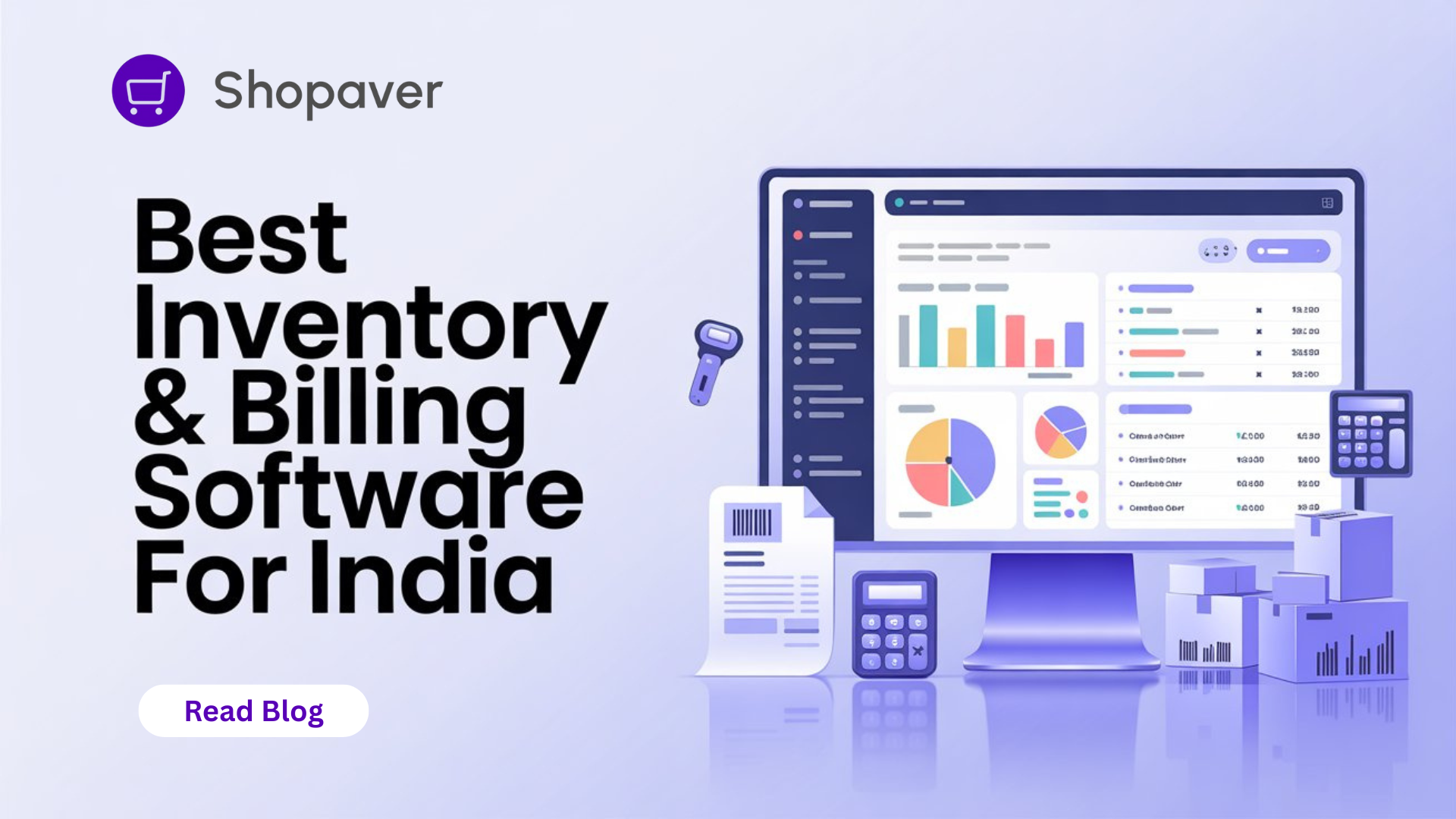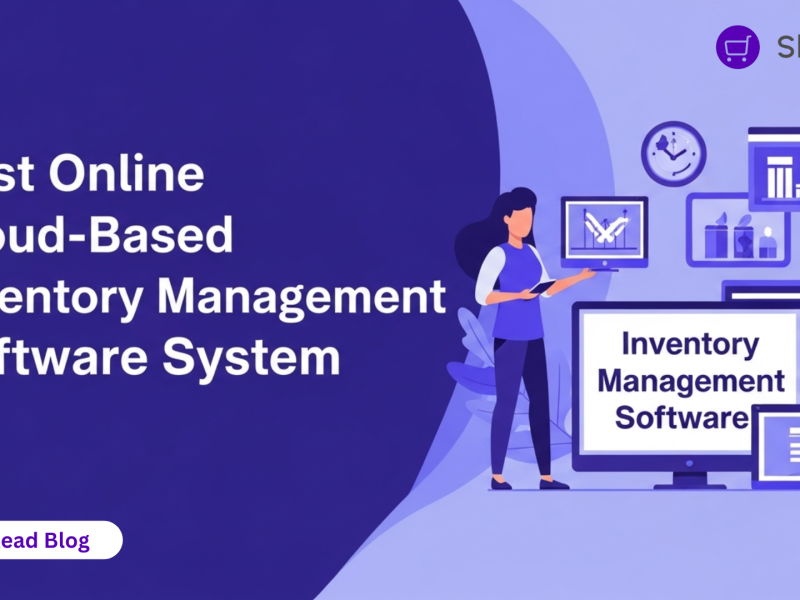Running a retail, wholesale, or multi-outlet business in India today means juggling stock, GST invoices, multiple payment modes, returns, suppliers, and, increasingly, online orders. The right inventory and billing software doesn’t just make life easier; it turns chaos into predictable cash flow, reduces errors that eat margins, and gives you real-time visibility so you can grow confidently.
Below, I’ll analyze what makes great inventory & billing software for India/Asia, show how different business types benefit, and explain why Shopaver is an outstanding choice — including practical examples, ROI math, and suggested business wording/taglines you can use.
What businesses need from inventory & billing software in India
Indian merchants have some specific requirements:
- GST-ready invoicing (HSN/SAC codes, GSTIN validation, e-invoicing support where applicable)
- Multi-payment support: UPI (QR), card payments, wallets, cash and bank integration
- Multi-store & multi-price management for franchises or retail chains
- Sync with e-commerce channels (Amazon, Flipkart, Shopify, etc.) for orders and returns
- Barcode & POS support for quick checkout in busy retail stores
- Offline mode for areas with unreliable internet — sync when online
- Local language-friendly UI and customer support (Hindi, regional languages)
- Affordable, scalable pricing for small shops up to enterprise retailers
A good solution should reduce manual effort, prevent stockouts and overstock, speed up billing, and provide simple reports that owners actually use.
Core features you should expect (and why they matter)
- Accurate stock tracking (real-time)
Prevent stockouts and overstocks. Real-time counts let you reorder just in time, which frees up working capital. - GST-compliant billing & e-invoicing
Correct GST application avoids compliance penalties. E-invoicing (if applicable) cuts errors when filing returns. - Integrated POS with barcode scanning
Reduces billing time and human errors at the counter — essential for busy stores. - Multi-channel order management
One dashboard for in-store sales, online marketplaces, and your website reduces duplicate entries. - Supplier & purchase automation
Auto-reorder rules, purchase orders, and supplier ledger tracking simplify procurement. - Reports owners actually read
Daily sales, margin by SKU, aging receivables, stock-turnover — presented simply. - Payments & reconciliation
Auto-matching of payments with bank/UPI transactions speeds month-end close. - Mobile apps & offline capability
Salespersons, store managers, and owners need on-the-go dashboards and POS that work offline. - Scalability and integrations
From one shop to 100 stores, integration with accounting (or built-in accounting) keeps growth painless.
How different Indian businesses benefit — quick examples
- Grocery & kirana: barcode scanning + low latency POS means faster queues and fewer billing mistakes. Auto-reorder prevents perishable stockouts.
- Pharmacies: batch/expiry tracking for compliance and safety. Integration with local health systems helps.
- Apparel stores: size/color variants, seasonal sales reports, and multi-store inventory transfers.
- Wholesalers/distributors: credit-ledger management, GST filing support, and bulk invoicing features.
- Small manufacturers: simple bill of materials, raw material consumption tracking and inventory valuation.
Why Shopaver is an excellent choice for India
I’ll highlight specific reasons Shopaver is a strong fit for businesses operating in India and similar markets.
1. Built for Indian tax and payment realities
Shopaver provides GST-aware invoicing, HSN/SAC support, and e-invoice compatibility — all crucial for legal compliance. It also supports UPI, QR-based payments, and bank reconciliation workflows that match how Indian customers pay today.
2. Real-time multi-store inventory & centralized control
For retailers with multiple outlets, Shopaver offers centralized stock visibility with per-store allocation and transfer features. This reduces transfer errors and helps keep fast-moving SKUs available where customers need them.
3. Fast, modern POS with offline mode
A responsive POS that can operate when internet connectivity drops is essential. Shopaver’s offline sync ensures sales continue and data syncs automatically when connectivity returns.
4. Integrations with popular e-commerce marketplaces and accounting tools
Synchronizing orders, cancellations, and returns from online channels reduces manual entry and mismatched stock counts.
5. Local support and onboarding for Indian businesses
Many solutions are feature-rich but hard to implement. Shopaver focuses on quick onboarding and support in local time zones, a big plus for SMEs that don’t have in-house IT.
6. Flexible pricing and quick ROI for small businesses
Shopaver packages are designed to be affordable for small shops while scaling to support larger retail networks.
A simple ROI example — how quickly software pays for itself
Let’s quantify savings from faster billing and reduced manual work.
Assume:
- The new system saves 2 hours of staff time per day in aggregate (fewer manual entries, faster billing).
- The average staff cost (fully loaded) is ₹200/hour.
- Month length = 30 days.
Step-by-step arithmetic (digit-by-digit):
- Time saved per day × hourly cost = daily savings
2 × 200 = 400 (₹400 per day) - Monthly savings = daily savings × 30
400 × 30 = 12,000 (₹12,000 per month) - Annual savings = monthly savings × 12
12,000 × 12 = 144,000 (₹144,000 per year)
So a modest efficiency gain pays back a significant portion of subscription + device costs within months — and that doesn’t count reduced shrinkage, fewer GST errors, or better buying decisions from accurate data.
Comparison pointers (how to evaluate Shopaver vs alternatives)
When comparing Shopaver to other popular names (Tally, Zoho Books, Marg, QuickBooks, etc.), focus less on brand and more on fit:
- GST and Local Compliance: Does it Handle E-Invoicing and Filing Workflows?
- POS & offline: Is the checkout lightning fast and usable offline?
- Multi-channel sync: Can it handle marketplace orders and reconcile returns?
- Usability: Can your store staff use it without daily hand-holding?
- Support & onboarding: Is support India-based and available during your business hours?
- Total cost of ownership: license + hardware + onboarding + monthly fees.
Shopaver scores well when you value Indian-centric features, fast onboarding, and POS reliability.
Implementation tips — make rollout painless
- Start with one store and a pilot team to validate SKU mapping and GST settings.
- Clean your master data (SKUs, HSN codes, supplier GSTINs) before migrating.
- Train frontline staff on POS operations and simple troubleshooting.
- Set reorder rules for top 20% SKUs (Pareto) first.
- Monitor reports weekly for the first 90 days — adjust reorder points and pricing.
Suggested wording & taglines for Shopaver (use on website, pitch decks, ads)
Short elevator pitch (one line):
- “Shopaver — India’s smart inventory & billing software that keeps your stores stocked, your GST clean, and your customers happy.”
Longer 2-line pitch:
- “Shopaver is an all-in-one inventory, billing, and POS platform built for Indian retailers and distributors. From GST-ready invoices to UPI payments and multi-store stock control, Shopaver simplifies operations so you can focus on growth.”
Tagline ideas (pick one):
- “Shopaver — Inventory made effortless.”
- “Bill faster. Stock smarter. Grow stronger.”
- “GST-ready billing. Real-time inventory. Zero headaches.”
- “From counter to cloud — Shopaver keeps you moving.”
- “Small shop. Big control.”
- “Power your store with simple, Indian-ready software.”
- “Faster billing. Smarter buying. Happier customers.”
- “Retail operations, simplified.”
Short value lines for marketing (3 options):
- “POS, Inventory, GST — One dashboard.”
- “Works offline. Syncs online. Runs your store.”
- “Built for India — UPI, GST, and multi-store ready.”
Choosing the right inventory and billing software is more than ticking feature boxes — it’s about how quickly your staff adapts, how reliably your checkout runs, and whether the system actually reduces the daily friction of running a business. For Indian retailers, GST compliance, UPI support, offline POS, and easy multi-store management are non-negotiable.




One thought on “Best Inventory & Billing Software for India”